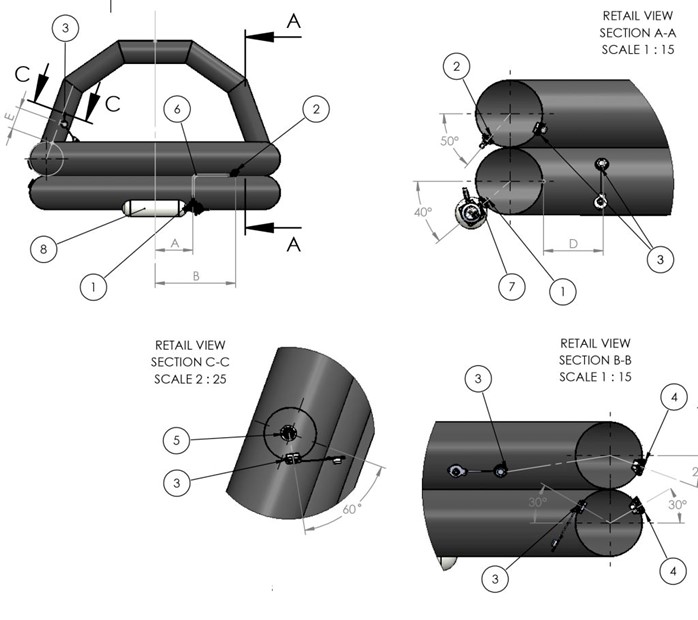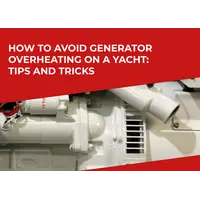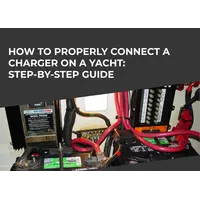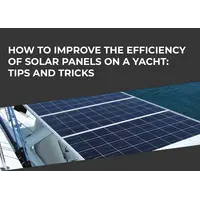In this guide professional sailors from topRik give advice on choosing the right HERO life raft. Our marketplace offers all models of the three lines of this reliable rescue device. We offer HERO rafts that will ensure the rescue of the crew in coastal waters, open sea and in case of an accident during longer passages.
Each model in each line is designed for a certain passenger capacity, and as a result has a different set of additional rescue equipment, food and water supplies. We talk about this in more detail in the article, which, as always, is based on practical experience. In the process of studying the topic "Safety at sea and crew actions in emergency situations", cadets of our skipper school tested all types of HERO life rafts in practice on yachts and catamarans of our SimpleSail fleet.
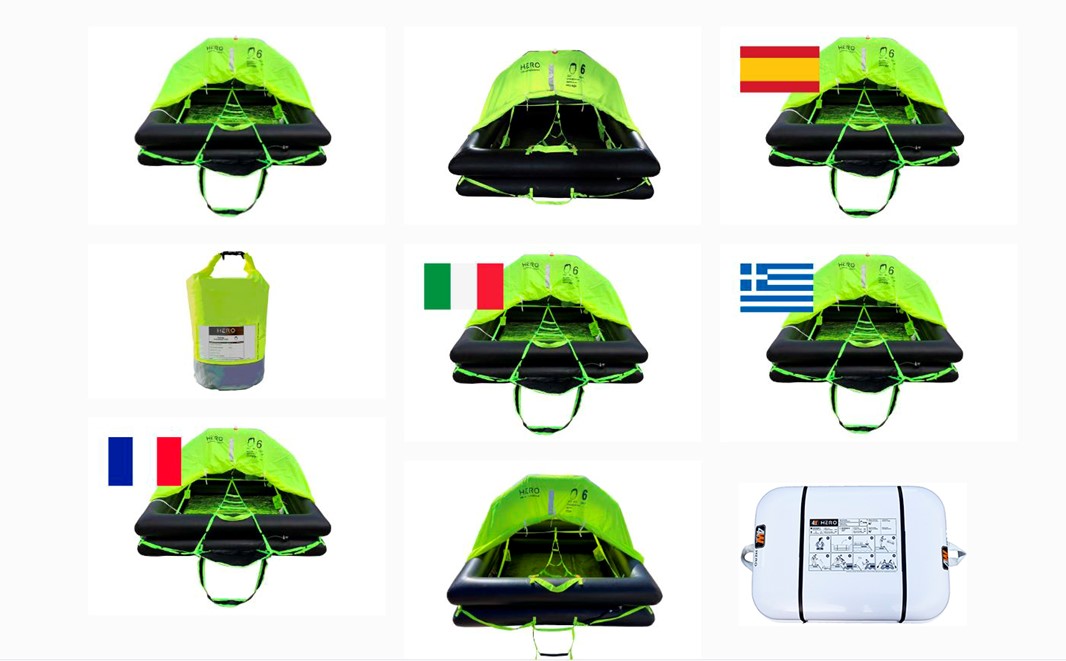
Choosing the Right Life Raft Is the Key to Peace of Mind on Board
Since American inventor Horatio Carley filed the first patent for a life raft in 1903, both the design of these life-saving devices and the materials used to make them have changed.
Modern inflatable life rafts have a proven design made from durable materials such as natural rubber, neoprene or polyurethane coated nylon, which provides increased wear resistance and reliability.
The life rafts are designed with automatic inflation mechanisms, hydrostatic release devices and self-healing capabilities, which increases their reliability and ease of use.
Over time, standards organizations, including the International Maritime Organization, have established strict safety rules and standards for the design, testing, and preparation of life rafts for deployment.
These standards ensure that life rafts meet certain criteria for capacity, equipment, buoyancy and stability, increasing the chances of survival for those in distress.
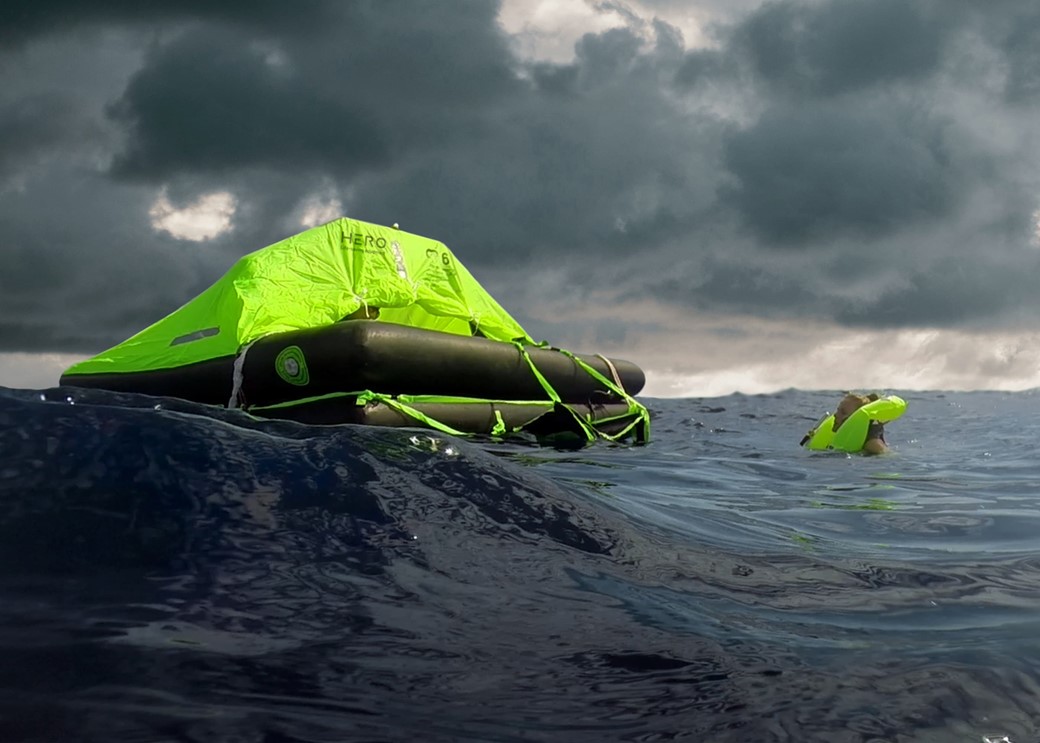
SOLAS (International Convention for the Safety of Life at Sea) provides standard equipment for life rafts for:
- vessels of unlimited navigation area;
- passenger ships engaged in short international voyages;
- coastal vessels not engaged in international voyages.
This means that even if you go on a coastal cruise, you must comply with SOLAS requirements.
ISO international standardization system defines requirements for various aspects of the manufacture of marine life rafts. Both the design and materials of manufacture are specified, as well as the presence of special systems. For example, there are special requirements for the inflation system, which also require SOLAS approval.
ISO standards for marine liferafts – 9650-1 and 9650-2: ISO 9650-1 is for liferafts used on ships for seagoing and transoceanic transport, and ISO 9650-2 contains requirements for liferafts that can be used on ships that navigate in coastal areas.
We believe that such unprecedented attention from international organizations to this type of marine rescue equipment should convince yacht owners to take the choice of a life raft seriously. And also, to choose those models that fully meet the requirements of SOLAS and ISO, as it is the most realistic chance to save lives from a vessel that has suffered a disaster at sea. The topRik team wishes that it never comes to this, but still recommends buying a HERO life raft - a guarantee of peace of mind on board any yacht.
HERO Rafts Range – a Choice of Choices
Why do we say that HERO liferafts are suitable for all small boats? Because the HERO range allows you to choose a liferaft depending on:
- dimensions of the yacht;
- number of people on board;
- navigation rules in different countries;
- navigation region (coastal navigation, open sea, long-distance passages).
Materials and Production Technologies
The raft manufacturing group HERO LIFE-SAVING EQUIPMENT, headquartered in Barcelona, is a world-renowned manufacturer of inflatable life rafts, operating in the shipping business for over 40 years. The group has subsidiaries in Belgium, France, Spain and Shanghai.
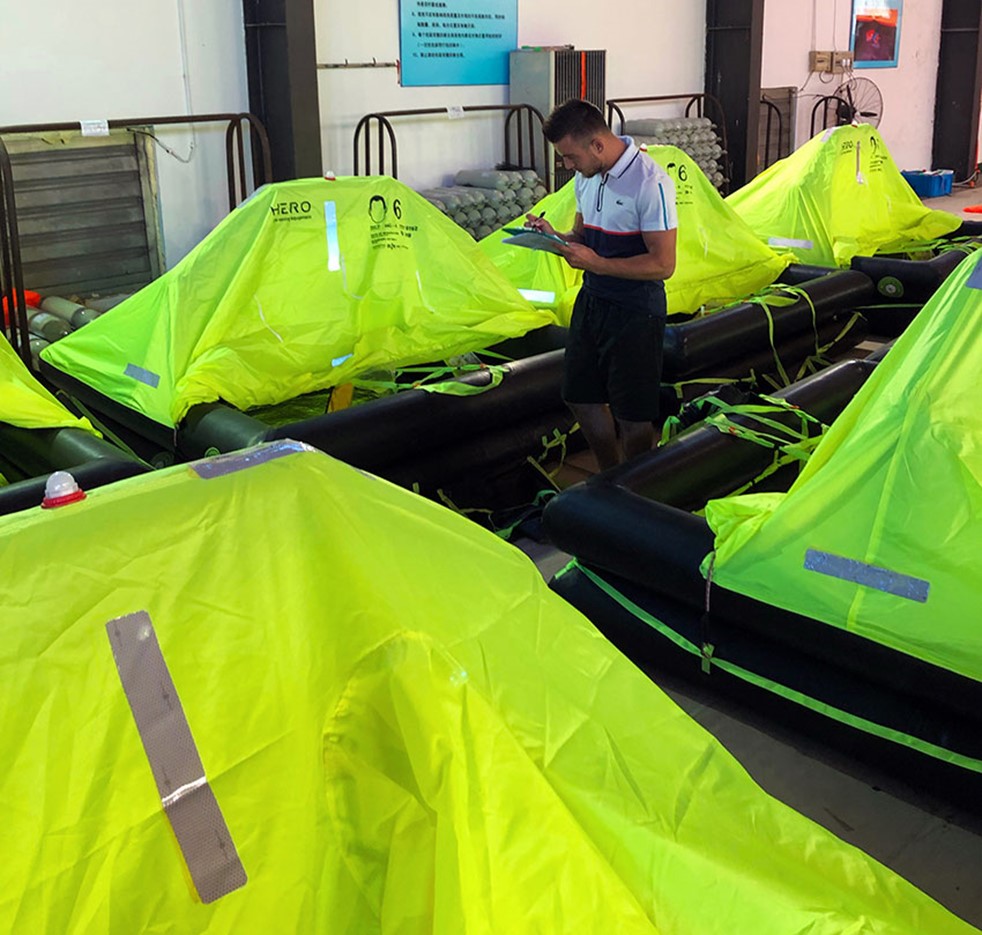
In addition to the fact that the production is certified in the ISO 9001 system and all models meet the requirements of the ISO 9650 standard, HERO life rafts are certified according to MMF (Marine Marchande Française) by the classification society RINA. Some EU countries require manufacturers to carry out specific tests and use additional equipment to have their rafts approved in their country. HERO LIFE-SAVING EQUIPMENT adapts its models to the specifications of each EU country, always respecting the rules of the national authorities. For example, some rafts have a Spanish certificate (DGMM).
HERO life rafts are made of durable natural rubber. The shell consists of a complex assembly of specially developed fabric between a double rubber coating. The assembly of the shell "Rubber - Fabric - Rubber" is made by pressing with a thermosetting method. The technology used to press the shell ensures uniform thickness and homogeneity, while maintaining the properties of rubber. Each element of the structure is then assembled by hand gluing, which gives a real guarantee of quality and durability.
The use of natural rubber in the construction of the entire HERO line is based on the unique strength and reliability of this material. In addition to strength, natural rubber provides exceptional elasticity, resistance to cuts, punctures and tears. Rubber provides the liferaft with excellent abrasion resistance, while the structure behaves like a protective shell.
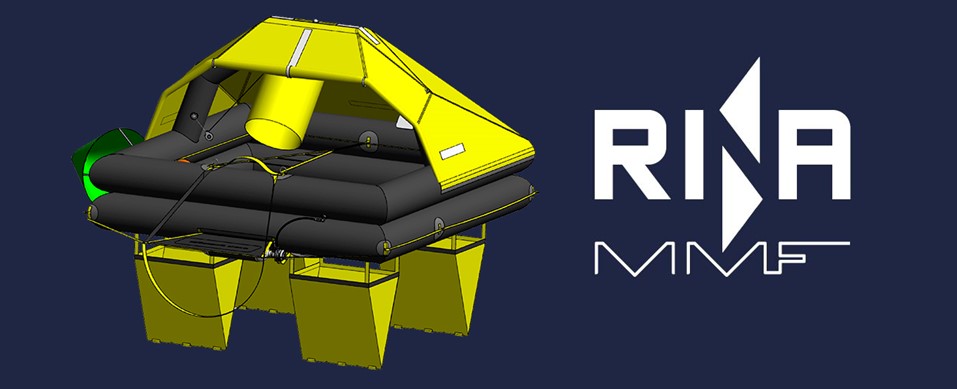
Technical and mechanical characteristics of the HERO raft frame made of natural rubber:
- air and water resistance;
- tensile strength;
- elasticity, shock absorption;
- resistance to deformation;
- vibration filtration;
- towing force;
- wear resistance;
- resistance to temperature changes;
- durability, resistance to abrasion, rot, mold;
- the absence of pores prevents the penetration of marine flora and fauna;
- easy to repair.
As we have already mentioned, the quality of the gas inflation system and all components required for the deployment of the life raft are regulated by SOLAS.
Therefore, all equipment required for inflating and maintaining pressure in a life raft is manufactured in Europe by LEAFIELD MARINE ltd, a recognized leader in the design, development and production of valves and inflation systems for various inflatable structures.
Here you can see the following parts of this equipment:
- A6 – pressure relief valve;
- A8 – pumping/topping valve;
- gas inlet valve (type GIVT);
- gas pumping system (type GIST);
- marine hoses.
Comparison of Different HERO Raft Models
On the topRik marketplace, as of the day of writing this article, you can buy HERO life rafts of the following modifications:
HERO Offshore Liferaft. Designed for safe, long-term sea cruising. Provides stability in extreme open sea conditions with possible strong winds and significant waves.
It has large entrance, self-deploying awning and rescue equipment bag added to the rescue kit to provide additional rescue equipment for more than 24 hours.
There’s possibility of storing in a bag or container. Different versions of the series are designed for 4-6-8-10-12 people.
HERO Standard International. Recommended for day yacht cruising on coastal or inland waterways. Specially designed to ensure the safety of sailors in countries where there are no special regulations. Comes standard with an automatic inflatable arch canopy.
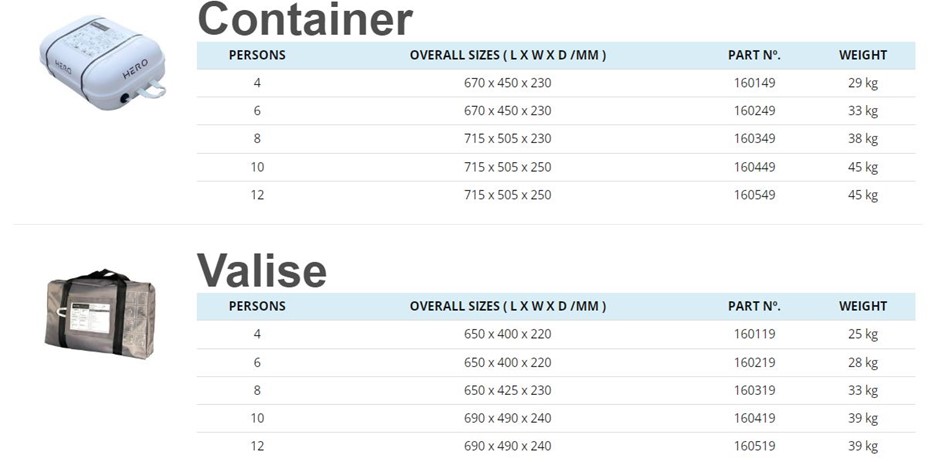
HERO Coastal. Used for navigation from 6 to 60 miles from anchor. Recommended for daytime navigation. Designed to protect the crew in moderate weather and sea conditions. Comes with an automatic inflatable arch awning.
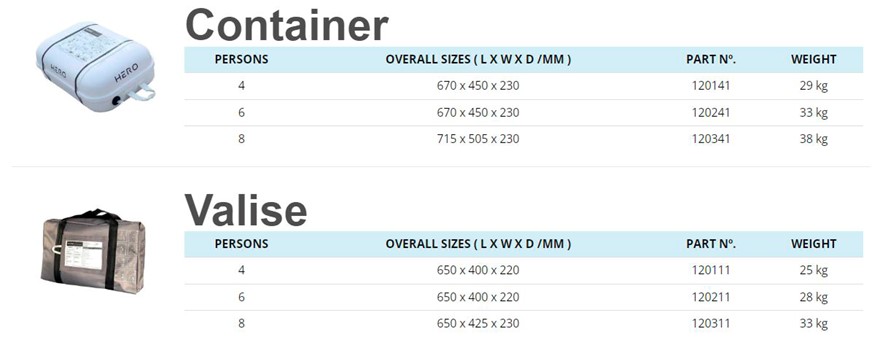
We provided a more detailed overview of the key HERO raft models in the previous article about these liferafts; here we will once again provide a table of the characteristics of the models that meet the requirements of the international standard ISO 9650 for navigation on the open sea and coastal navigation.
|
Type/Characteristics |
ISO 9650-1 |
ISO 9650-2 |
|
Scope of application |
open sea |
Coastal waters |
|
Max. number of people |
from 4 to 12 people |
from 4 to 10 people |
|
Max launch height |
6 m |
4 m |
|
Suitable temperature range |
Group A: -15° to +65° |
from 0° to 65° Celsius |
|
Material on the interior floor |
Group A: Insulated double floor |
Base floor |
|
Freeboard (height of wall above water level) |
Up to 4 people: 250 mm |
Up to 4 people: 200 mm |
|
Area per person |
0.372 m2 |
0.25 m2 |
|
Buoyancy per person |
96 liters |
82 liters |
|
Roof construction |
Deploys automatically |
Deployed manually |
|
External light |
4.3 candelas of luminosity |
Luminosity 0.75 candela |
|
Reflective material |
1500 cm2 |
1500 cm2 |
|
Equipment |
Up to 24 hours: Standard package |
Standard package |
How to Determine the Requirements for a Liferaft for a Specific Yacht
For each vessel, the needs of the functions and characteristics of the life raft should be calculated strictly individually. It is necessary to know exactly the number of people who will board, the features of the sailing region, climatic conditions and other characteristics of the planned route.
Passenger Capacity Assessment: for Small Yachts or Large Vessels?
Life raft power ratings are the maximum number of people the raft can hold, based on a minimum area of about four square feet per person. They do not take into account comfort, the space needed to service and repair the raft, or storage space for additional survival gear. If you plan to carry more people than the ratings for each specific model, you should hope for a quick rescue. But under-occupancy is no better. There is a risk of capsizing if the number of people or the appropriate weight is exceeded or not reached.
Analysis of the Navigation Area: Coastal or Open Sea Conditions
There are three main designs of life rafts depending on the region where they can be used effectively: coastal, offshore and ocean. All types of life rafts are designed to keep survivors out of the water while they wait for quick rescue. As you can imagine, the efficiency of rescuers depends largely on the type of passages the wrecked vessels are making.
Coastal rafts should only be considered if there is a high probability of rescue during the day, as they lack features necessary for long-term survival, such as dual inflatable tubes.
Sea rafts extend survival time to four or five days, including supported canopies and two buoyant tubes (the second tube acts as an emergency reserve). Ocean rafts are designed for long-term survival of at least 30 days and are mandatory equipment on most commercial vessels and by some international racing organizations.
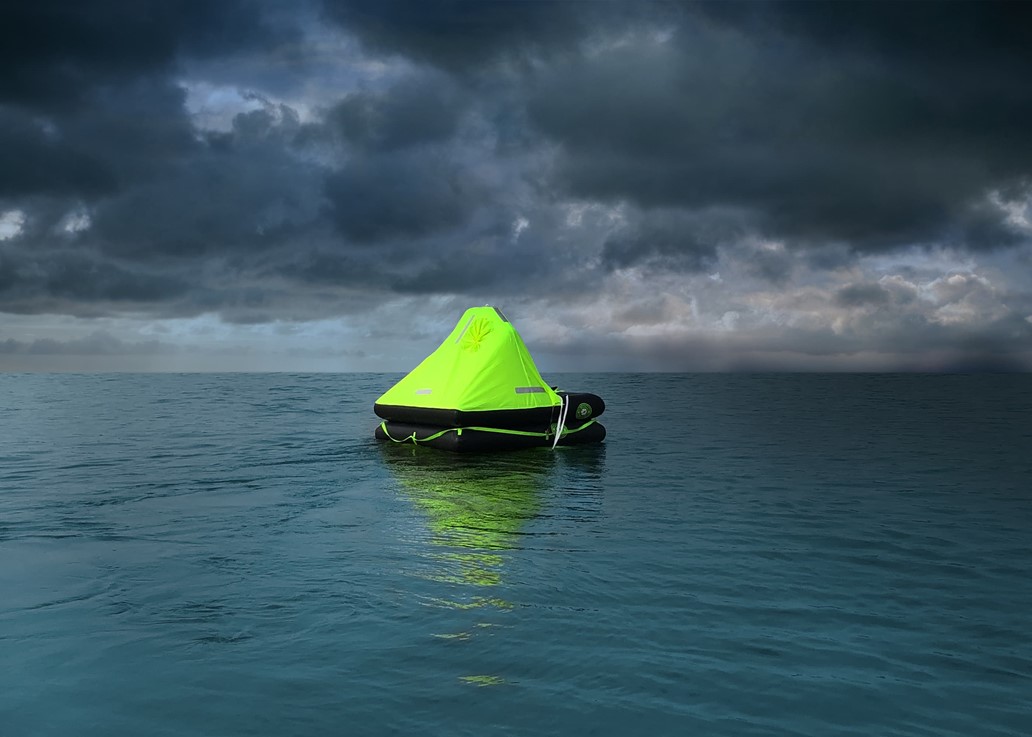
Duration of Planned Transitions and Climatic Conditions
When choosing a life raft depending on the length of the route and climatic conditions, one should rely on the international ISO standard 9650. Its ISO sections 9650-1 and ISO 9650-2 contains characteristics of life rafts that are acceptable for use in coastal regions, on the open sea and during ocean crossings. We posted a table of these characteristics in the previous material on this topic, as well as a little higher in this article.
Care and Maintenance of the Raft
The life raft requires regular maintenance, checking the condition of the emergency kit and food and water supplies. It is advisable to inspect the life raft before each trip to sea.
Recommendations for Regular Inspection and Refilling of Emergency Kits
Each life raft has a specific maintenance interval specified by the manufacturer, which must be strictly adhered to.
What activities may be included in the maintenance of HERO life rafts:
- checking the general condition of the life raft: ballast chambers, roof, bottom;
- replacement of various parts if necessary, such as seals, signs and equipment;
- inspection and replacement of food and water supplies when expiration dates have passed;
- checking the performance of the pumping system (regularity of opening and closing of inlet and safety valves);
- testing air buoyancy chambers for leaks;
- packing and sealing the life raft in a vacuum bag, as well as in a container or bag.
How to Properly Store a Raft and Check It Before Going Out to Sea
If the vessel has a special place for storing a life raft, place the raft in it in a horizontal position with the instructions facing up.
When choosing a location yourself, ensure quick access to the raft in case of danger and its launching into the water with minimal effort. Also remember that some items in the equipment kit can affect the compass readings, so place the raft at least 1 m away from it.
The free end of the tie-down rope should be melted in a fire and securely fastened to the vessel. Before going out to sea, check again that the tie-down rope is securely fastened, the plastic container is not damaged, and there are no chains or locks on the raft.
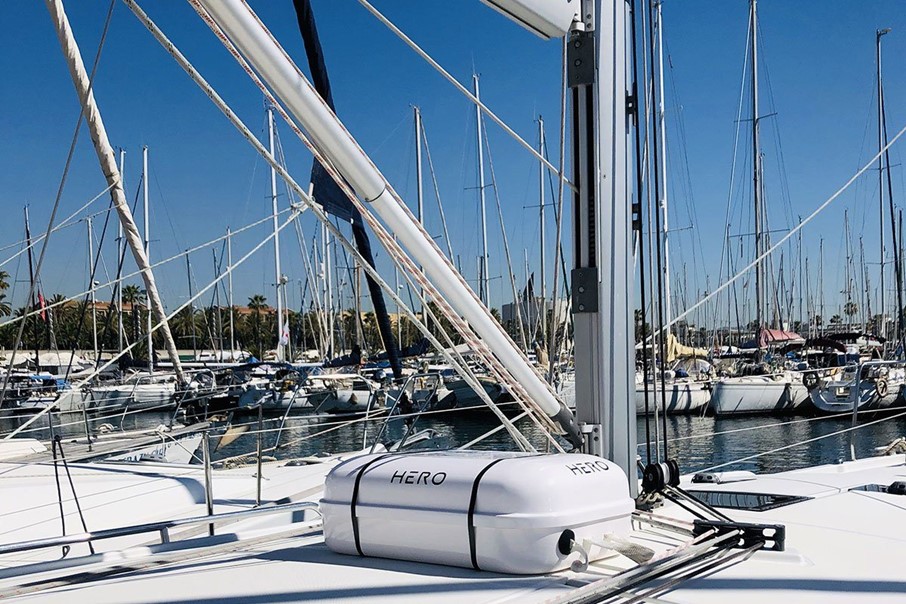
Contacting HERO Service Centers and Warranty Service
HERO life rafts presented in the topRik marketplace have different warranty periods. Please read this information carefully when purchasing a HERO raft.
Remember that you can only receive warranty service from certified service centers, where the equipment will be provided with professional repair or preventive maintenance.
The manufacturer has established a 12-year warranty with a 3-year preventive inspection cycle for the main models of HERO life rafts.
HERO life rafts are equipped with a hydrostatic inflator. When the life raft is underwater (1.5-4 m water depth), the hydrostatic inflator is activated by water pressure and the life raft floats and inflates automatically. However, hydrostatic inflators must be replaced every 2 years.
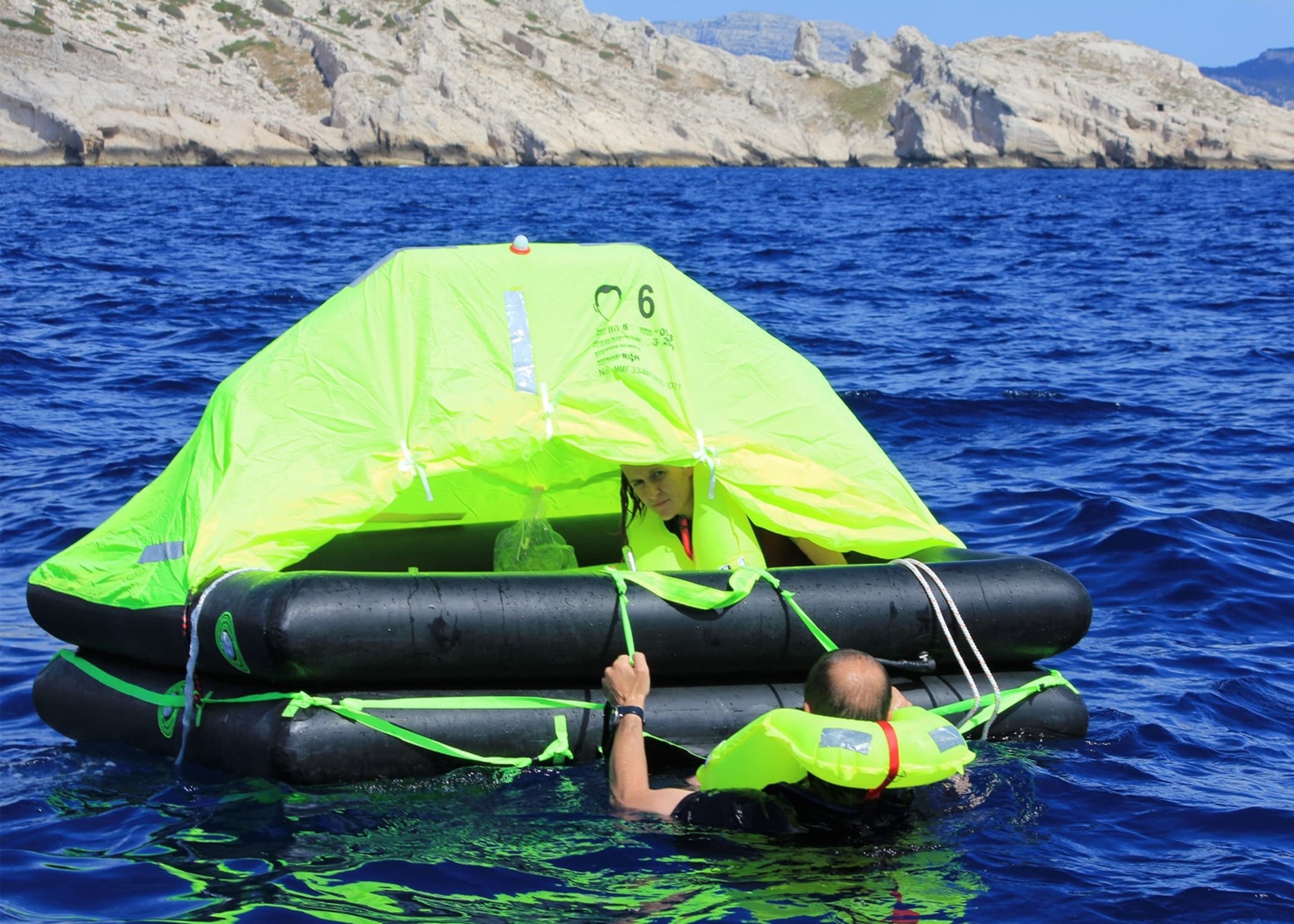
The right choice of a life raft that meets all the requirements of international maritime organizations and standards is a guarantee of your safety at sea, which does not forgive a frivolous attitude, like any natural element. Not only your life depends on your choice, but also the lives of crew and passengers who will board your vessel and thus entrust you with their lives and health. Do not betray this trust - do not save on safety.
HERO raft models are listed in a separate catalog with a detailed description of functions, characteristics, and design features.
If you have difficulty choosing the HERO life raft model that is optimal for your yacht, get a free consultation from experienced topRik team sailors right now. We have tested all the models presented in the marketplace in practice and will provide you with comprehensive professional recommendations.
Call us using phone number listed on this page, use the feedback form or send a request by email to [email protected].


